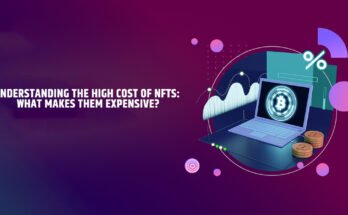The Fintech revolution shows no signs of slowing down. By 2022, it is expected that the value of the worldwide fintech sector will have increased by an estimated $309.98 billion. From $127 billion in 2018, that is a 25% annual growth!
By making it simple to trade, bank, swap money, and accept loans without the need for direct human contact, fintech has revolutionized people’s lives and routines.
The technology industry has experienced innovations and revolutions during the last several decades—especially financial technology, which is currently the fastest-growing sector of the global economy.
Fintech has drastically altered how people deal with money and think about it in a very short amount of time. By bringing the “Cashless” digital world and real-time value exchange to life, it has highlighted the necessity for digitization. Businesses all around the globe are encouraging hesitant customers to develop the habit of making digital purchases.
Lending services are now as simple to use as any other commodity and are available at your fingertips, thanks to this digitization. Increased internet usage and technological advancements are solely responsible for the frictionless nature of the entire process of digital lending. In an interview, Nirmala Sitharaman, India’s Finance Minister, stated that the country’s fintech industry is anticipated to increase in value from its current level of $50–60 billion by 2025 to $150 billion.
Fintech is a digital technology that can revolutionize how financial services are delivered by stimulating the creation of brand-new or modified versions of current business models, apps, procedures, and goods. Blockchain, artificial intelligence, machine learning, cloud computing, and the Internet of Things are some technologies that foster customer confidence in fintech firms.
The fintech sector has gained enormous investment from many different company verticals and increased corporate efficiency by fusing technology with financial services. This collaboration has sped up innovation and research. Through the most recent developments, the fintech sector has been growing. To stay current, they have been keeping up with the trends.
Financial Inclusion
The next billion people might be reached by fintech. Small-size items may now be operated at extremely low costs thanks to technology. Indians with middle-class incomes may be served up to Tier 3 and beyond, which has great potential.
HealthTech
To enhance the use of healthcare products, health tech is driving product innovation and digital distribution. Indians spent $115 billion on healthcare services this year, with almost $72 billion coming from their own pockets (i.e., not paid by insurance). Fintech is driving this transition for Healthtech and payments simplification. Using technologically advanced solutions, fintech seeks to modernize the healthcare industry. The inefficiencies frequently present in healthcare payment plans are eradicated with cutting-edge technology like AI, blockchain, machine learning, and more. The availability and cost of medical care will inevitably rise with fintech.
Artificial intelligence and machine learning
AI and ML tools have the power to revolutionize the way financial institutions handle legal compliance, financial fraud, and cybercrime. Additionally, by leveraging customer data for increased customization, fintech may keep providing goods and services suited to each client’s requirements.
Blockchain
Digital financing is now safer thanks to the usage of blockchain technology. It is a decentralized, distributed, and open ledger that keeps track of transactions on several computers to prevent tampering with the record. Blockchain will concentrate on changing complexity and delivery timeframes with an increased emphasis on the payments segment, closely followed by securities and trade finance. This will increase the operational effectiveness of financial institutions.
The Potential of Web 3
The phrase “Web3” (also known as “Web 3.0”) was first coined to denote the next phase of the internet in 2021. Web3 is essentially a decentralized blockchain-based ecosystem. Web3 is expected to improve in both usability and safety in 2022.
Today, “Big Tech” companies own a significant portion of the online apps and content. By enabling creators to monetize their fans and develop their businesses directly, Web3 lessens their reliance on social media and gives them more authority.
By recreating the internet on decentralized, user-driven ledger technology, it hopes to decentralize the internet (i.e., blockchain). Crypto enthusiasts who don’t want to use the established banking system are its major users.
Direct peer-to-peer transactions are made possible by DeFi (decentralized finance), which is entirely built on blockchain and does not rely on any financial intermediaries (brokers, exchanges, banks, etc.) for the business of funds. However, the absence of oversight or accountability poses a significant risk.
The Web3 community will likely begin to offer answers to the three problems of accessibility, usability, and consumer protection in 2022. These will assist in fulfilling Web3’s promise to create a secure environment for financial transactions.
Trends in Hiring
The epidemic has sparked a technology upswing that has expanded employment in the fintech sector. According to a survey by the World Economic Forum, data scientists and analysts will hold the top two developing positions in the fintech sector in 2022.
People who can work with data are mostly what the future will require. With up to 95,000 job openings nationwide, the need for labor is growing significantly.
Companies’ priorities while hiring are also changing. Instead of only filling openings while being fixated on internal wage ranges, firms nowadays are searching for the greatest individuals that will boost the company’s culture.
Additionally, marketing and sales teams are expanding in fintech businesses. They employed individuals with backgrounds in engineering and business until recently. A foundation in data analysis, artificial intelligence, and superior soft skills are required for occupations in the post-pandemic era.
The Argument Against Friction in Payments
Digital ones have replaced physical payment mechanisms. And Amazon’s “1-Click” buying button was where it all began.
When Amazon obtained the patent in 1999, it was unheard of for customers to submit their billing, shipping, and payment information once and then purchase items with a single click.
Since then, a lot of disruptive firms have entered this market. Today, frictionless payments are widely used across all sectors and include chatbots, e-wallets, IoT devices, and much more. Real-time consumer connectivity will spread as a result of this growth.
In 2022, one-click button providers could go even farther and provide other integrations, such as one-click insurance, etc.
The need for new abilities
The financial technology sector has revolutionized financial services and is based on the concept of disruptive innovation. More than financial talents are needed for the personnel it employs to contribute to the reconstruction of the financial sector.
The booming cryptocurrency business is driving up demand for blockchain specialists. Some experts say a highly trained blockchain engineer may make far more money than a seasoned software engineer.
According to projections, cell phones will increasingly be used for banking and other financial transactions. Therefore, candidates will give their resumes an edge by listing talents relevant to mobile technologies.
Finally, unlike what the public believes, a worker in a Fintech start-up cannot thrive just based on their knowledge of technology, business, or finance. To succeed over the long run in this field, professionals must also develop a strong portfolio of soft skills, including emotional intelligence, communication, creativity, and flexibility.
Newcomers will have to adhere to stricter compliance requirements
With 43 new fintech unicorns created in the third quarter alone in 2021—more than twice as many as during the same time in the previous year—the fintech community saw significant growth on a worldwide scale. This industry vigor has also rekindled a desire for innovation at any cost.
However, some fintechs have run afoul of authorities while attempting to fulfill the constantly shifting needs of customers. Compliance will probably become more of a priority in 2022 as leaders and consumers start to demand greater responsibility.
Compliance is not simply a box to be checked; it is a crucial foundational element for every fintech company or financial services organization intending to launch a new product. Customers demand quick and easy service. Therefore the difficulty will be to provide that without sacrificing fraud checks and financial crime checks.
India will have 21 Fintech unicorns by the end of 2022. As of 2020, the Indian payments industry had the most start-ups, with over 400. By 2026, the worldwide Fintech market is anticipated to reach around $324 billion, with a CAGR of roughly 23.41%. Other nations outside the US and the UK are becoming powerful Fintech centers. There are now 187 unicorns in the fintech sector worldwide, 21 of which are located in India.
Even though the fintech sector has undergone a revolution thanks to the most recent innovations, this is only the beginning. Technology always evolves, and new developments are created every day without ceasing. Similar circumstances apply to fintech, which is trying to combine modernity with simplicity.
The danger of failing to adopt and prosper in the fintech revolution is greater than failing to embrace it while ensuring it adheres to the legal framework and cyber security.
By making it simple to trade, bank, swap money, and accept loans without the need for face-to-face interactions, fintech is transforming lives and habits. One of the main benefits for this sector has been this. The fintech sector has a bright future and eventually wants to make everyone’s life easier.








